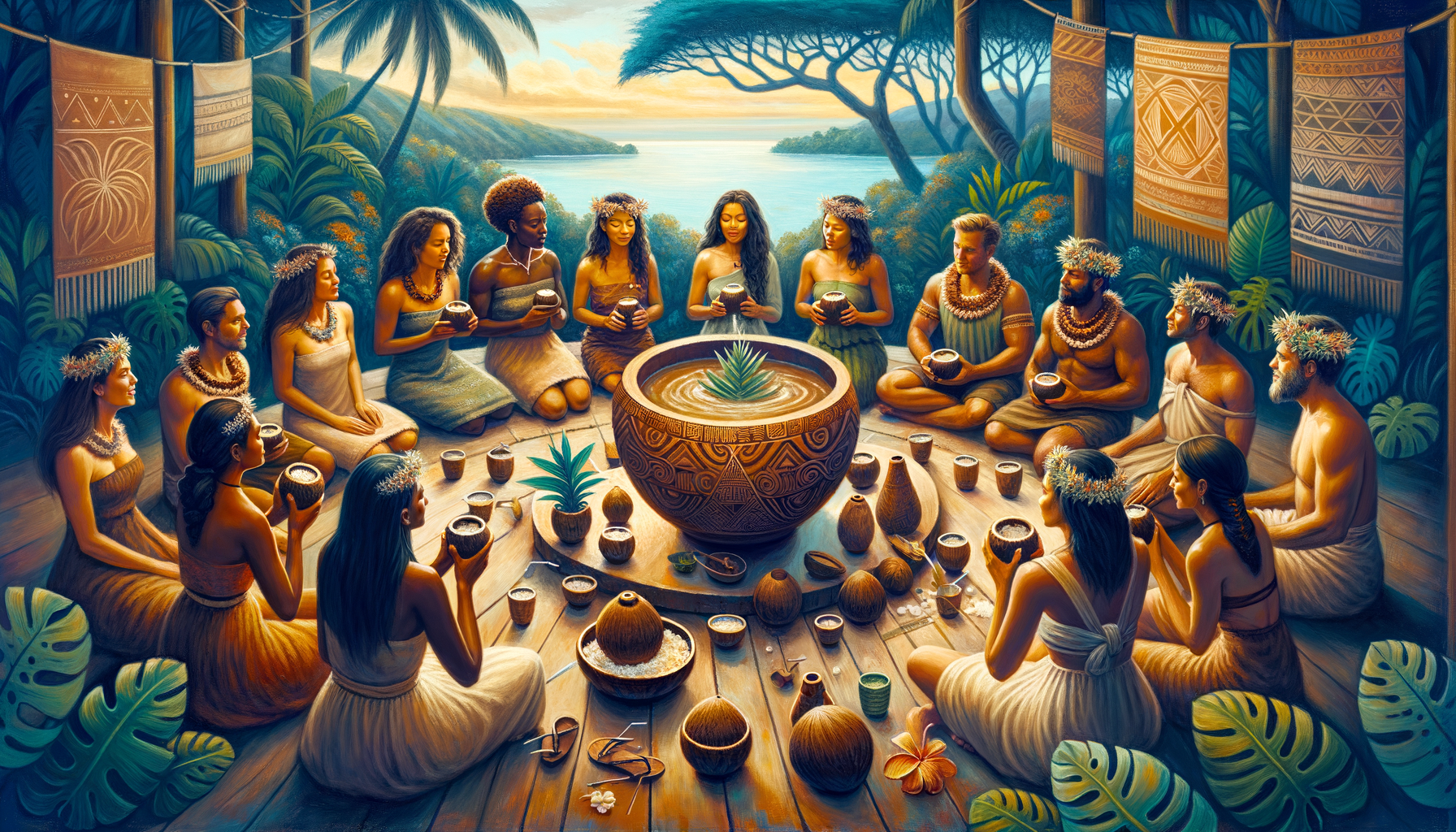Introduction
Imagine a drink that brings people together. This is ceremonial kava—a drink enjoyed for years in the South Pacific. It’s made from the roots of the Piper methysticum plant. People drink kava to feel relaxed and to connect with each other. Let’s learn more about this special drink and how it’s important both in traditional and modern settings.
The Origins of Ceremonial Kava
Ceremonial kava comes from the South Pacific and has been around for over 3,000 years. It’s more than just a drink; it’s a key part of many cultures. For example, a Samoan legend says the goddess Sina planted the first kava plant on Tupua’s grave to bring peace.
Kava ceremonies had many uses. They were part of religious rituals, social events, and even political meetings. Drinking kava was a way to connect with the divine, honor ancestors, mark important events, and strengthen social bonds.
Components of a Traditional Kava Ceremony
A traditional kava ceremony is full of rituals and respect. The main item is the kava bowl, or tanoa, which is often beautifully carved and big enough for everyone to share. This bowl symbolizes unity and sharing.
The ceremony is usually led by a chief, who prepares and distributes the kava. The kava root is mixed with water in the tanoa and strained through a cloth. Guests sit in a circle, and kava is served in half coconut shells called bilos.
Songs and chants also play a big role in these ceremonies. They make the event feel special and bring a sense of community. These chants can honor gods, tell stories, or set a peaceful tone.
The Social and Cultural Impact of Kava Ceremonies
Kava ceremonies help build strong communities. These gatherings allow people to discuss important issues, resolve conflicts, and come to agreements. Drinking kava helps everyone feel more open and understanding.
Culturally, kava ceremonies help keep traditions alive and preserve cultural identity. Workshops, festivals, and community events focused on kava help pass down knowledge and keep these customs relevant.
How Ceremonial Kava is Making Waves Today
Kava has spread beyond the South Pacific and is now enjoyed in many places around the world. Kava bars are becoming popular, offering new people a chance to try this traditional drink. These bars serve as places where people can gather, relax, and connect.
Matt Warren, co-founder of Psychedelic Water, experienced a traditional kava ceremony and found it life-changing. He said, "The sense of community and respect was amazing. It influenced how we wanted our product to be—promoting peace and connection." This shows how traditional practices can inspire modern ideas and businesses.
Preparing Your Own Ceremonial Kava Event
Hosting your own kava ceremony can be a great way to connect with others. Here’s how you can do it:
-
Ingredients and Tools:
- Kava root powder
- A large bowl (tanoa)
- A cloth for straining
- Coconut shells (bilos) for serving
-
Preparation:
- Mix the kava root powder with water in the tanoa.
- Stir and strain the mixture through the cloth to make it smooth.
-
Setting the Scene:
- Create a cozy space for guests.
- Use dim lighting and soft music to set the mood.
-
Hosting:
- Follow traditional steps if possible.
- Serve the kava in bilos, making sure to be respectful.
Tips & Tricks for a Memorable Kava Ceremony
-
Dos and Don’ts:
- Do respect the traditions.
- Don’t rush the ceremony; it’s about connection and mindfulness.
-
Enhancing the Experience:
- Use traditional music or chants.
- Encourage guests to share stories or thoughts.
The Health Benefits of Ceremonial Kava
Kava not only helps you relax but also brings mental health benefits through social interaction and community. Many people feel more connected and grounded after a kava ceremony.
Conclusion
Ceremonial kava has a rich history and tradition. It’s a great way to bring people together, both in traditional and modern settings. Try hosting your own kava ceremony to experience this special drink and its community-building magic.
Additional Resources
-
Books and Articles:
- "Kava: The Pacific Elixir" by Vincent Lebot, Mark Merlin, and Lamont Lindstrom.
-
Websites and Organizations:
- Noble Kava (https://www.noblekava.com)
- Kava Society International (https://www.kavasociety.com)
-
Community Groups:
- Kava forums on Reddit
- Local kava enthusiast meetups on Meetup.com
Keywords: ceremonial kava, kava root, kava ceremony, traditional kava, Piper methysticum

Leave a Reply